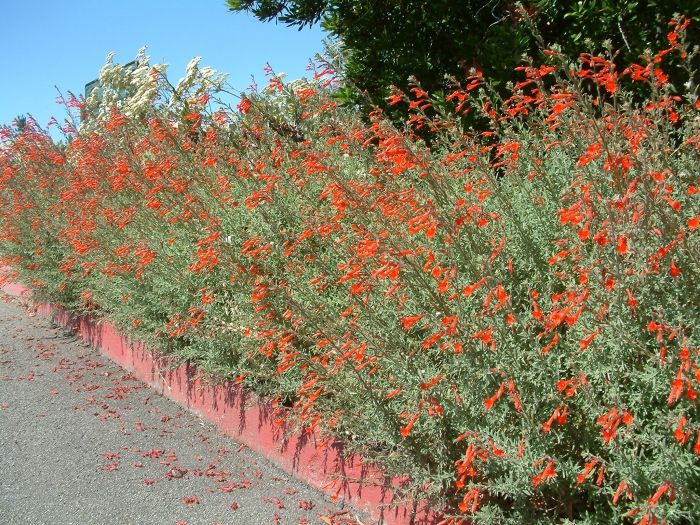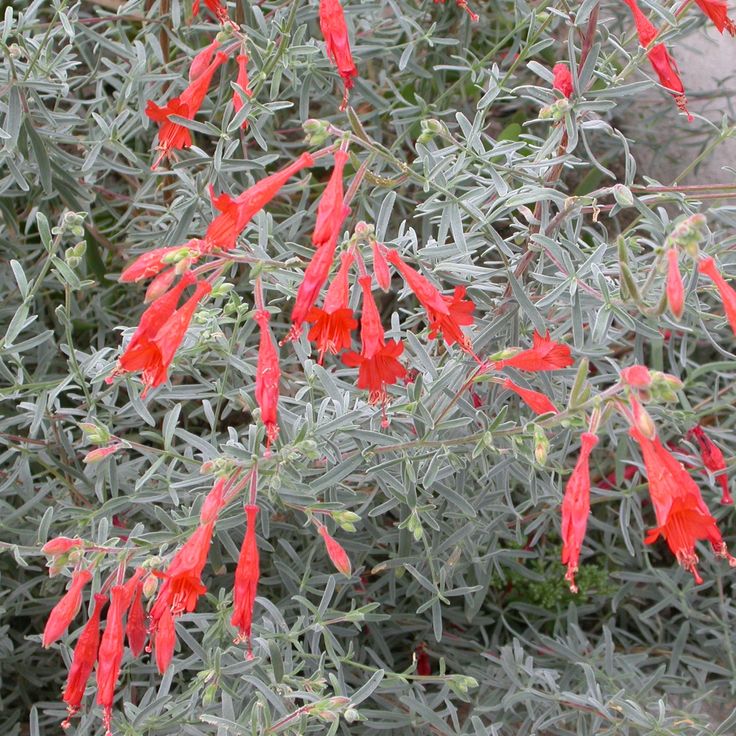Epilobium canum ‘Catalina’ Fuchsia

Epilobium canum ‘Catalina’ Fuchsia, also known as California fuchsia or Catalina fuchsia, is a captivating perennial plant native to the coastal regions of California.
Renowned for its vibrant blooms and adaptability to various habitats, this species adds a burst of color to gardens, natural landscapes, and restoration projects.
In this comprehensive article, we will delve into the botanical intricacies, habitat preferences, ecological significance, conservation status, and care guidelines for Epilobium canum ‘Catalina’ Fuchsia.
Botanical Description
Epilobium canum ‘Catalina’ Fuchsia is characterized by its compact, mounding growth habit and profusion of tubular, scarlet-orange flowers.
The plant typically forms dense clumps or mats, with stems reaching heights of 1 to 2 feet (30 to 60 cm). The leaves are lance-shaped, gray-green in color, and covered with fine hairs that give them a velvety texture.
From late spring to fall, ‘Catalina’ Fuchsia produces clusters of trumpet-shaped flowers that attract hummingbirds and butterflies with their nectar-rich blooms.
The flowers are followed by small, elongated seed capsules that split open to release numerous tiny seeds, facilitating the plant's reproduction.
Habitat and Distribution
Epilobium canum ‘Catalina’ Fuchsia is endemic to the coastal regions of California, where it is found in a variety of habitats, including coastal bluffs, chaparral, and open woodlands.
It thrives in well-drained soils and full sun but can also tolerate partial shade and a range of soil types.
‘Catalina’ Fuchsia is particularly well-suited to gardens and landscapes with dry, Mediterranean climates, where it adds vibrant color and attracts pollinators.
Life Cycle and Phenology
As a perennial plant, Epilobium canum ‘Catalina’ Fuchsia undergoes a yearly life cycle marked by seasonal growth and flowering.
New growth emerges in spring, with the plant reaching full maturity by early summer. Flowering typically occurs from midsummer to fall, with the peak bloom period lasting several weeks.
Deadheading spent flowers can encourage continuous blooming throughout the growing season. In winter, the foliage may die back in colder climates but regenerates from the base in spring.
Ecological and Cultural Importance
Epilobium canum ‘Catalina’ Fuchsia holds both ecological and cultural significance. In ecological terms, it serves as a valuable nectar source for pollinators such as hummingbirds and butterflies, contributing to local biodiversity and ecosystem health.
The dense foliage also provides cover and nesting sites for small mammals and insects, further enhancing habitat value.
Additionally, ‘Catalina’ Fuchsia has cultural importance as a native California plant, celebrated for its beauty and resilience in gardens and landscapes.
Conservation and Threats
While Epilobium canum ‘Catalina’ Fuchsia is not currently listed as threatened or endangered, habitat loss and degradation pose significant threats to populations of the species.
Urbanization, agriculture, and land development all contribute to the decline of natural habitats where ‘Catalina’ Fuchsia grows.
Invasive species encroachment and climate change further exacerbate these threats, altering ecosystems and disrupting native plant communities.

Caring for Epilobium canum ‘Catalina’ Fuchsia
Sunlight
Plant ‘Catalina’ Fuchsia in a location that receives full sunlight to partial shade.
While it can tolerate some shade, it thrives in full sun.
Watering
Provide moderate water levels during the growing season, allowing the soil to dry out slightly between waterings.
Once established, ‘Catalina’ Fuchsia is drought-tolerant and requires less frequent watering.
Soil
Plant in well-drained, sandy or loamy soil with a neutral to slightly acidic pH.
Amend heavy clay or compacted soil with organic matter such as compost to improve drainage and fertility.
Mulching
Apply a layer of organic mulch around the base of the plant to conserve soil moisture and suppress weed growth.
Keep the mulch several inches away from the stems to prevent rot.
Pruning
Trim back dead or leggy growth as needed to maintain a compact, bushy shape.
Deadhead spent flowers regularly to encourage continuous blooming throughout the growing season.
Follow these care guidelines to grow thriving Epilobium canum ‘Catalina’ Fuchsia plants, enriching your outdoor space with beauty and diversity.
Whether as a pollinator plant, ground cover, or garden focal point, ‘Catalina’ Fuchsia's vibrant blooms and velvety foliage will captivate.
Leave a Reply
You must be logged in to post a comment.